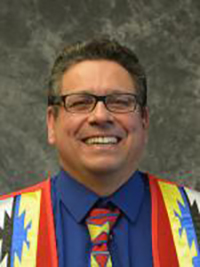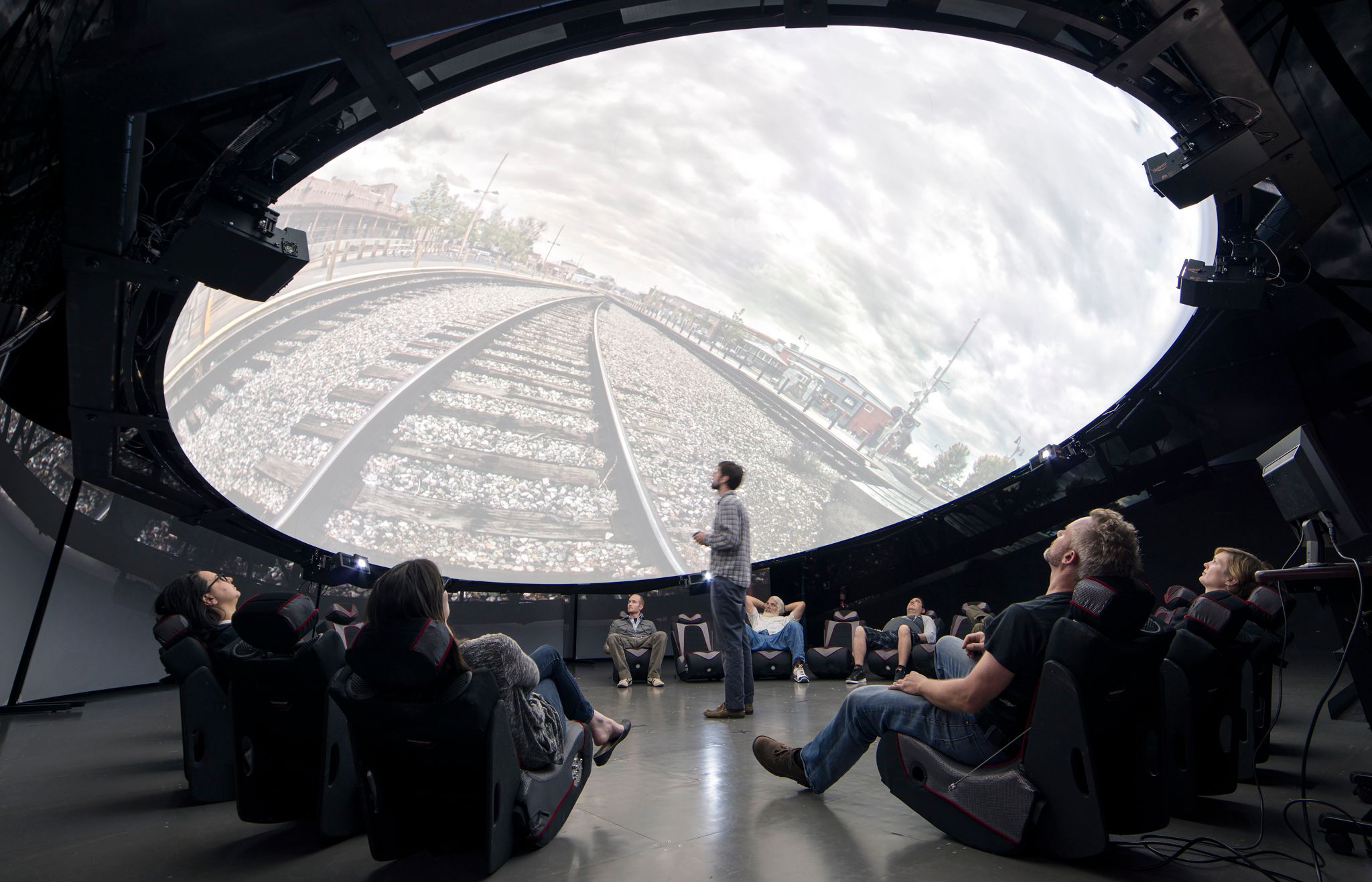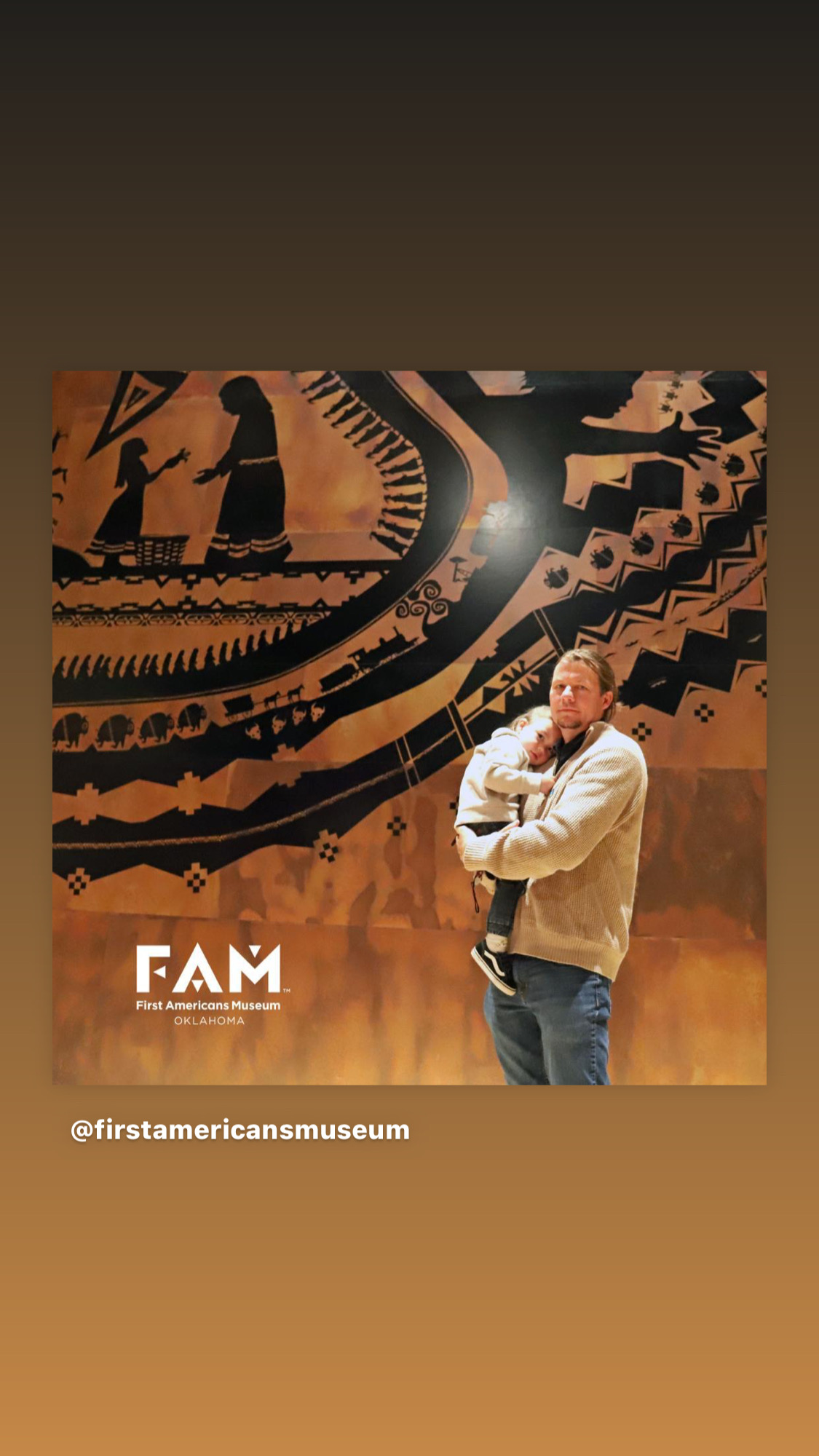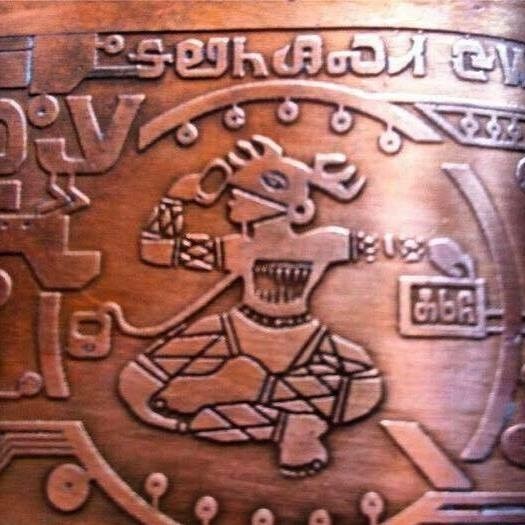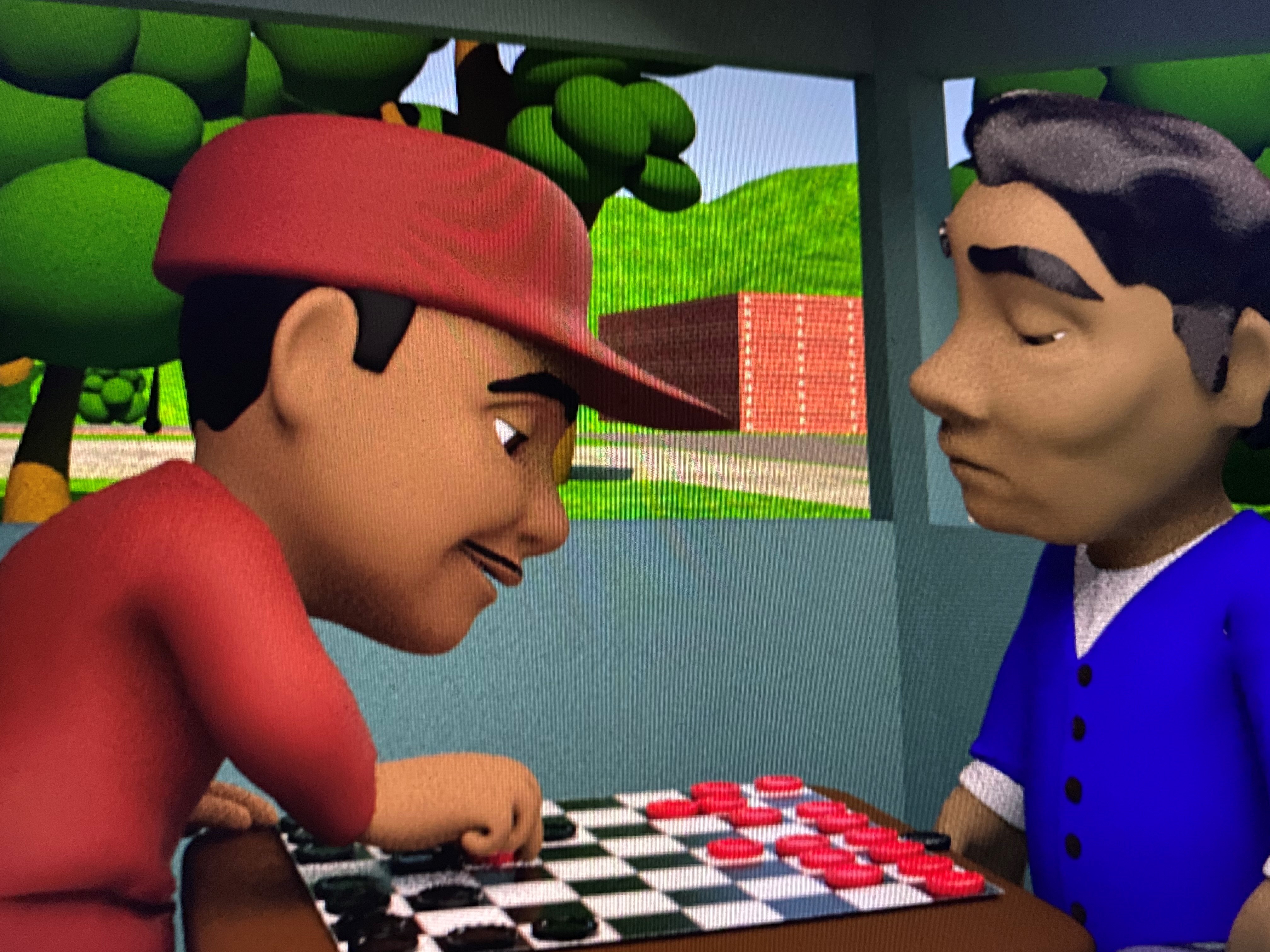Today
Recently, Erb, a computer animator, film producer, educator, language technologist and artist, sat in front of his computer during a Zoom meeting, the image of a woman in a flowered dress in the personalized Zoom background behind him.
The Cherokee illustration was an image of his grandmother. When asked what the background was, he responded that unofficially it was for an animated series in Native language funded by a tribal nation. This is one of many projects he is working on. In fact, even he struggles to list all current undertakings.
“Where do I begin,” he sighs.
There are so many: an animated series based on a true story, about five brownfields – environmentally impaired indigenous lands – but with a twist: they’ve been cleaned up with indigenous community support.
Or working with language programs, such as he’s done most of his professional career. “Before I came to Missouri, I worked at Cherokee Nation and did animations and worked as a language technologist with Google, Microsoft and Apple to get our language on all the different devices,” he adds. “Now our language is on every device, pretty much, which are sold in stores. I’m trying to figure out how to make sure that our language continues.”
He does this using Cherokee fonts that he created, more than 40 total. “These fonts were a new process in the beginning,” Erb says. “I don’t know if controversial is the right term, but obviously it was a concern in the beginning, whether or not new fonts were needed. Now they seem to be adopted much more readily. We don’t have the luxury of having thousands of fonts, so everyone you do is very important that you get it right and that people have some kind of input on them.” The fonts are in different Cherokee Nation language programs, and also shared with his community.
When in meetings with Apple and others, Erb brought the Cherokee Nation chief, colleagues, immersion teachers, children who spoke the language, and others with him to meet the corporate leaders.
“They took us seriously,” Erb says. “We are still one of the few indigenous languages that are installed [on Apple products]. Straight out of the box, for iPhone. That’s amazing!”
He’s also working on a VR – a computer-generated virtual reality, where a person interacts in a three-dimensional, 360 environment using electronic devices – funded through a grant from the National Science Foundation. Erb is working with Palmer on this planetarium project, Erb’s work involving the Cherokee Nation and a portable planetarium to take out into communities.
A former Cherokee Nation science officer, who did STEAM outreach in schools in Cherokee Nation, asked Erb: “Can you make an animation for this?’ And I thought ‘well, you know I do not do a 360-planetarium animation,’ but I thought I could figure it out, so I spent about six months trying to tell a story in that realm. When you make it a 360 environment unlike the traditional standard film, there’s a different kind of language because you can’t do the traditional camera shots.”
This was because it used a different film-production language and a different way of storytelling through the camera, Erb was not used to.
“It was hard. I didn’t have a lot of language skills when I was young. I could, you know, name animals and a few words, but it wasn’t enough. I needed to know more complex sentences and certainly Cherokee. Most people in my generation don’t speak much Cherokee.”
In addition, he recently completed an animation using the Cherokee language for a documentary called “Searching for Sequoyah” where he wrote the animated historical scenes of Sequoyah, a Cherokee person who wrote in the 1800s. A preview screening for the Tulsa Native American Society was broadcast Oct. 11, with a PBS Broadcast Premiere on Nov. 1. It is scheduled to appear on American public television on Nov. 21.
Another project: A Kanyen’kehà:ka Mohawk people piece in which he is creating a short, animated part of a larger undertaking. “’The Clay She Is Made Of’ is an animated documentary drawing comparisons between Sky Woman of Kanyen’keha (Mohawk) origin story and Kahstoserakwathe Paulette Moore’s mother - Patsy Hill. Sponsored by the Ontario Arts Council, the film focuses on the strength, humor and heart of Onkwehòn:we (Indigenous) women. Kahstoserakwathe Paulette Moore is a filmmaker and educator who focuses on the wellness of Onkwehô:we people through language, land and relationships.”
There are more projects where these come from: “Just a bunch of different things,” he explains. “Indigenous animators – there’s not that many and so it really keeps you busy trying to keep up with the work.”
He’s also done work for the American Indian Resource Center working with communities from Muscogee communities and Cherokee communities, teaching animation and film in the Muscogee and Cherokee languages, as well as producing film for the National Park Service.
“One of the things you learn fairly quickly – on any kind of project in the indigenous community, is it’s all consensus building, and involvement – and those are the long-lasting projects that are successful in communities when you are involving other people and decision makers. You certainly are consulting with a number of elders and talking to people about what you want to do before you do it.”
Erb says his interest in indigenous peoples began when he was in a computer-animated class in grad school while earning an MFA at the University of Pennsylvania with a concentration in Digital Media.
“My professor told us to tell a story, and all of a sudden, I thought I could tell a Cherokee one,” he says. “And that little idea turned into the rest of my life! And what this gave me was the ability to do something more connected to the community.”
After his MFA he fell in love with telling indigenous stories in digital media, he says.

